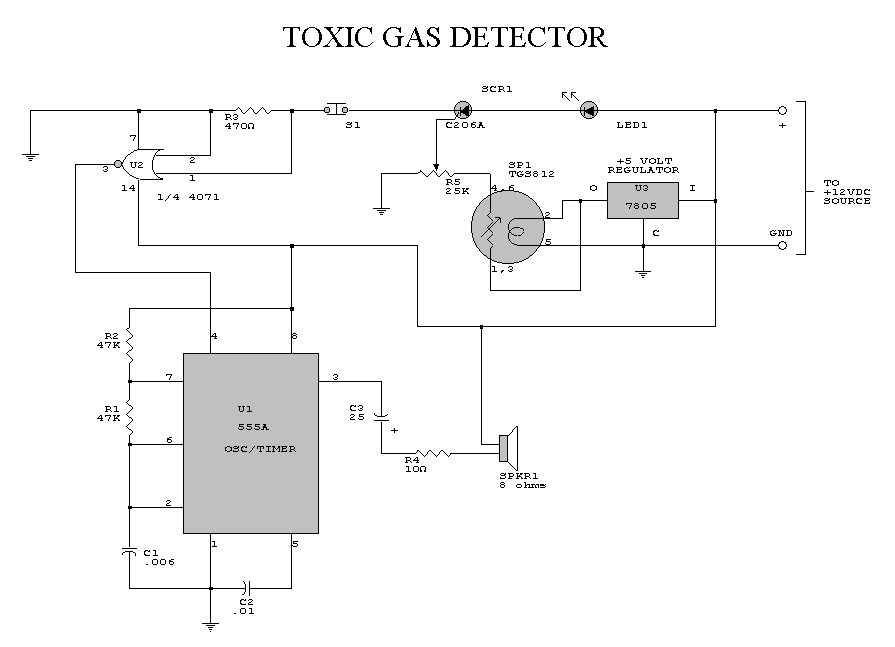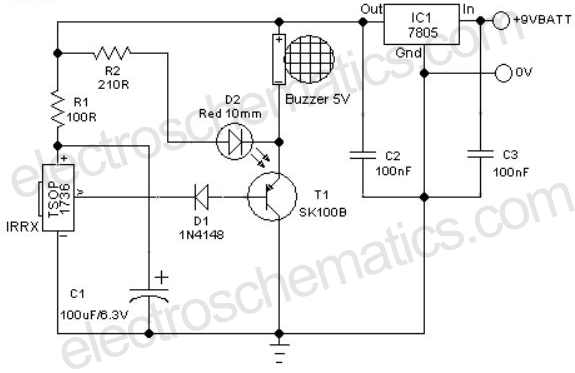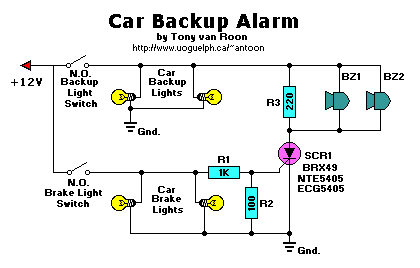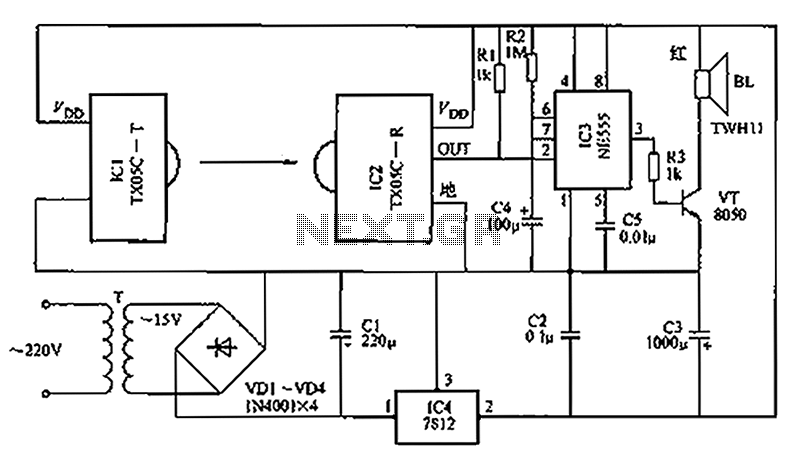
car alarm arming horn beep
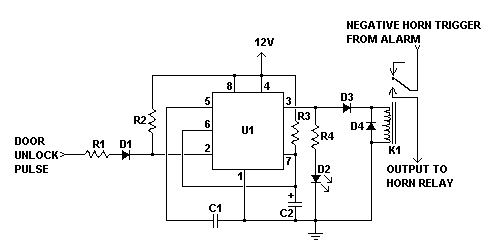
It is a significant advantage that most modern vehicles are equipped with built-in alarm systems. However, the sound of the horn when the alarm is armed can be perceived as noise pollution. Disconnecting the alarm system from the horn relay will eliminate this sound but will also prevent the horn from functioning during an actual alarm event. This circuit is designed to silence the arming beep while maintaining the alarm functionality by introducing a small delay into the signal. It is positioned between the alarm and the horn relay. The alarm must provide a continuous horn signal for a minimum of three seconds before the horn relay is activated. This ensures that the brief "beep" does not trigger the horn relay, while a sustained alarm signal will.
This circuit operates by utilizing a delay mechanism to differentiate between short and long horn signals from the alarm system. The primary components of this circuit include a timer IC, such as the 555 timer, configured in monostable mode, a relay to control the horn, and a few passive components such as resistors and capacitors.
When the alarm is armed, the timer IC receives the initial signal from the alarm system. If this signal is a brief "beep," the timer will not activate the relay, as the duration is insufficient to meet the three-second threshold. Conversely, if the alarm system sends a continuous signal, the timer will engage, allowing the relay to close and activate the horn.
The circuit can be designed with adjustable timing to accommodate different alarm systems. The timing period can be set by selecting appropriate resistor and capacitor values connected to the timer IC. Additionally, the relay should be rated to handle the current drawn by the vehicle's horn to prevent any damage.
This solution effectively addresses the issue of noise pollution while ensuring that the vehicle's alarm system remains fully operational in the event of a security breach. The implementation of this circuit is straightforward, making it accessible for automotive enthusiasts and professionals alike.It`s a great convenience that most modern cars come with a built in alarm, however it is nothing but noise pollution that the horn sounds when the alarm is armed. Disconnecting the alarm system from the horn relay will eliminate this, but prevent the horn from sounding in the even of an actual alarm.
This circuit serves to silence the arming beep yet maintain the alarm by introducing a small delay into the signal. It sits between the alarm and horn relay. The alarm must provide a constant horn signal for at least 3 seconds before the horn relay is activated. That way the quick "beep" will never activate the horn relay, while the constant alarm signal will. 🔗 External reference
This circuit operates by utilizing a delay mechanism to differentiate between short and long horn signals from the alarm system. The primary components of this circuit include a timer IC, such as the 555 timer, configured in monostable mode, a relay to control the horn, and a few passive components such as resistors and capacitors.
When the alarm is armed, the timer IC receives the initial signal from the alarm system. If this signal is a brief "beep," the timer will not activate the relay, as the duration is insufficient to meet the three-second threshold. Conversely, if the alarm system sends a continuous signal, the timer will engage, allowing the relay to close and activate the horn.
The circuit can be designed with adjustable timing to accommodate different alarm systems. The timing period can be set by selecting appropriate resistor and capacitor values connected to the timer IC. Additionally, the relay should be rated to handle the current drawn by the vehicle's horn to prevent any damage.
This solution effectively addresses the issue of noise pollution while ensuring that the vehicle's alarm system remains fully operational in the event of a security breach. The implementation of this circuit is straightforward, making it accessible for automotive enthusiasts and professionals alike.It`s a great convenience that most modern cars come with a built in alarm, however it is nothing but noise pollution that the horn sounds when the alarm is armed. Disconnecting the alarm system from the horn relay will eliminate this, but prevent the horn from sounding in the even of an actual alarm.
This circuit serves to silence the arming beep yet maintain the alarm by introducing a small delay into the signal. It sits between the alarm and horn relay. The alarm must provide a constant horn signal for at least 3 seconds before the horn relay is activated. That way the quick "beep" will never activate the horn relay, while the constant alarm signal will. 🔗 External reference

